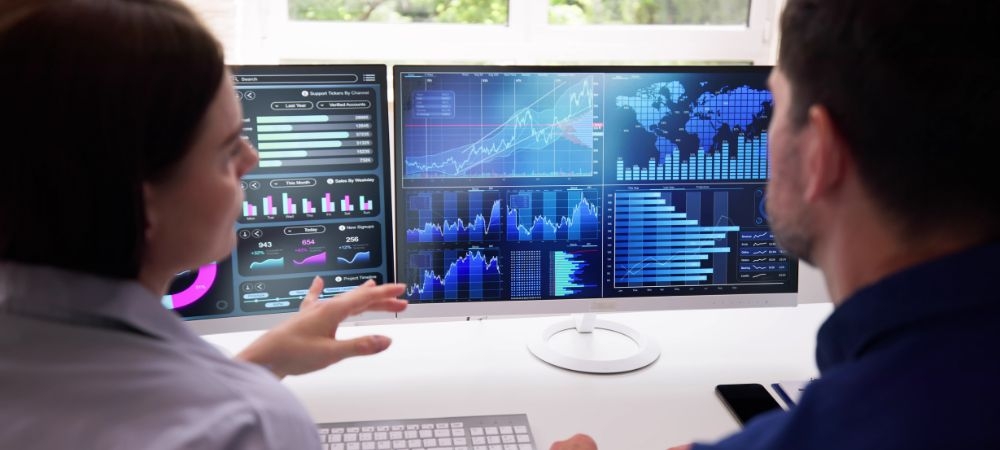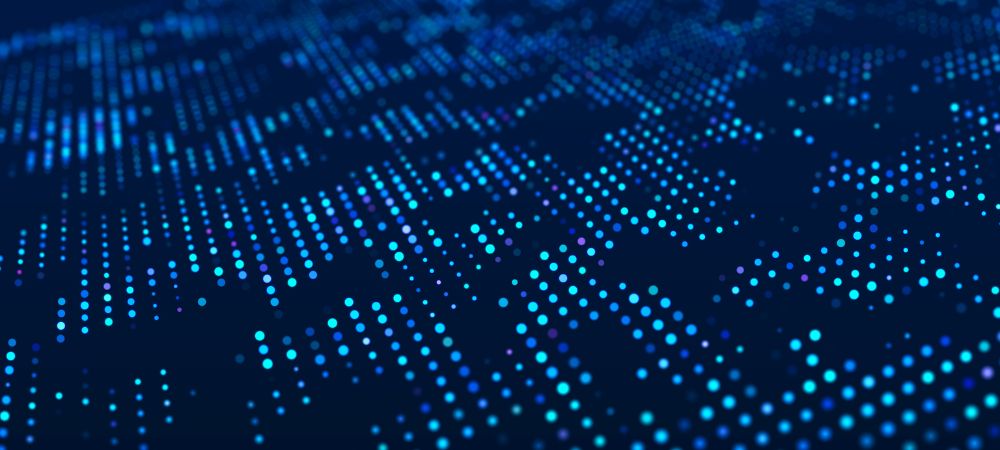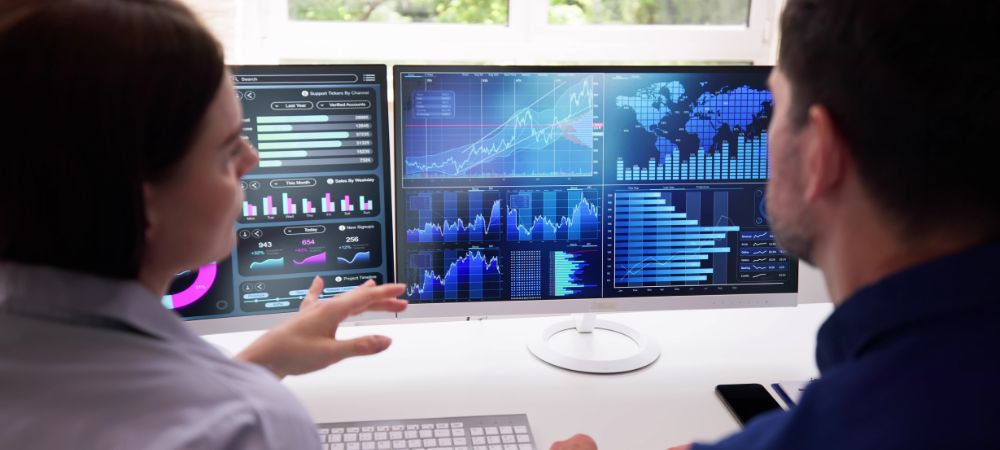

Oh boy, where do I even start? check out . The importance of narrative in data science can’t be overstated. It's not just about crunching numbers and throwing up some graphs; it's about telling a story that'll actually make people care. extra details available click on now. You see, without a compelling narrative, all that data is just... well, data. It’s dry, it’s boring, and let's face it – it's not likely to grab anyone's attention.
First off, let’s talk about the audience. If you’re presenting your findings to someone who doesn’t have a background in data science (which is most folks), you’ve gotta speak their language. And trust me, their language isn’t full of technical jargon or complex algorithms. They want something they can understand - something relatable. That's where storytelling comes into play.
A good narrative helps put the data into context. Imagine you have sales figures for the last quarter – sure, those numbers might be impressive on their own if they're trending upward or concerning if they're falling downwards – but without context? Meh! When you weave those figures into a story though – say how certain market trends influenced sales or how customer preferences shifted due to some external factors – suddenly the numbers come alive!
Plus, storytelling makes information memorable. People are far more likely to remember a gripping tale than a list of stats rattled off one after another. Stories evoke emotions and create mental images that stick with us long after we've heard them.
Oh! And don't forget persuasion! A solid narrative can take your audience from passive listeners to active believers in whatever you're pitching. Whether you're trying to get buy-in for a new project or convincing stakeholders that your analysis is spot-on, having an engaging storyline can make all the difference.
But let's not kid ourselves here; crafting a good story isn't easy-peasy lemon squeezy! You can't just slap any old tale onto your data and call it done. Nah-uh! Your narrative has gotta be relevant and accurate too because otherwise you'll lose credibility faster than water through a sieve.
So yeah… while diving deep into datasets and building fancy models is undoubtedly important (don't get me wrong there), don’t underestimate the power of weaving those insights into narratives that resonate with others . In essence , combining robust analysis with strong storytelling skills will ensure that your hard work doesn't go unnoticed but instead leaves its mark !
In conclusion , integrating narratives within Data Science gives life to raw numbers by making them more understandable , memorable , persuasive as well as credible . Therefore next time when working on any analytical project consider spending time not only analyzing but also thinking creatively how best present results effectively !
Data visualization ain't just about making pretty charts and graphs; it's a way to tell compelling stories with data. When done right, it can illuminate insights that might otherwise get lost in rows and columns of numbers. But achieving effective data visualization isn't always as straightforward as slapping some bars on a graph. It requires a blend of art and science, intuition and technique. So, let's dive into some techniques for effective data visualization that can help you become a better storyteller with your data.
First off, simplicity's key. You don't need to overload your visualizations with excessive details or fancy graphics. The more cluttered your chart looks, the harder it becomes to understand the core message you're trying to convey. Stick to what's essential—eliminate unnecessary elements like gridlines or 3D effects that can distract from the main point.
Next up is choosing the right type of chart or graph for your data. Not all charts are created equal, ya know? A pie chart might be great for showing proportions but terrible for illustrating trends over time—that's better suited for line graphs or bar charts. If you're not sure which type fits best, think about what question you're trying to answer with your data.
Color plays an important role too! But hey, don't go crazy with it either. Use color sparingly and purposefully to highlight crucial information or differences between categories. Overusing colors can make your visualization look chaotic rather than insightful.
Another thing—always provide context! Numbers in isolation rarely make sense without some backstory or explanation. Annotate key points on your graph where necessary so viewers understand why they're significant.
It's also good practice to avoid misleading representations of data—don't manipulate scales or axes just to exaggerate certain results; honesty's critical if you want people trust what you're saying.
Interactivity can add another layer of depth to your visualizations, especially in digital formats. Allowing users to hover over different parts of the chart for additional info or letting them filter datasets themselves makes the experience more engaging—and informative!
One often overlooked aspect is consistency in design elements like fonts and iconography throughout all your visualizations within a report or presentation; this helps maintain focus on content rather than getting bogged down by varying designs.
Lastly—and I can't stress this enough—test out how others interpret your visualizations before finalizing them! What makes perfect sense to you might be confusing someone else entirely different perspective will help catch any issues you may have missed initially.
So there ya have it: simplicity, correct chart types choice using colors wisely providing context ensuring honest representation incorporating interactivity maintaining design consistency seeking feedback—the essentials for effective storytelling through data visualization! With these techniques under belt you'll be well-equipped turn raw numbers into meaningful narratives that'll captivate inform audience alike
The original Apple I computer, which was released in 1976, sold for $666.66 because Steve Jobs suched as repeating figures and they originally retailed for a third markup over the $500 wholesale price.
Quantum computing, a kind of computation that harnesses the collective residential or commercial properties of quantum states, can possibly quicken data handling greatly compared to timeless computers.
The first electronic video camera was designed by an engineer at Eastman Kodak named Steven Sasson in 1975. It considered 8 extra pounds (3.6 kg) and took 23 seconds to record a black and white picture.
Expert System (AI) was first thought in the 1950s, with John McCarthy, that created the term, arranging the renowned Dartmouth Meeting in 1956 to explore the opportunities of machine learning.
Data Science, huh?. It's one of those buzzwords that seems to be everywhere these days.

Posted by on 2024-07-11
In today's tech-savvy world, the role of a data scientist ain't just important; it's downright essential.. See, we live in an age where data is literally everywhere, from our smartphones to our smart fridges.

Posted by on 2024-07-11
Machine learning's impact on data science is undeniably profound, and its future prospects are both exciting and a bit overwhelming.. It's hard to deny that machine learning has revolutionized the way we approach data analysis, but it hasn't done so without its fair share of challenges. First off, let's not pretend like machine learning just popped up out of nowhere.

Posted by on 2024-07-11
Navigating job searches and interviews in the field of data science can sometimes feel like an enigma, wrapped in a riddle, inside a mystery.. But hey, it's not as daunting as it seems!

Posted by on 2024-07-11
Mastering data science ain’t just about crunching numbers and building fancy algorithms.. There's a whole other side to it that experts don’t always talk about—networking with industry professionals and joining data science communities.

Posted by on 2024-07-11
Choosing the Right Tools and Software for Storytelling with Data
When it comes to storytelling with data, just having the numbers ain't enough. You need to choose the right tools and software to really make your data shine. But let's not sugarcoat it—it can get pretty overwhelming out there. There are so many options, and not all of them are gonna fit your needs.
First off, don’t think you need some fancy-pants expensive software to do good work. Sometimes, a simple tool like Excel or Google Sheets is more than enough. You'd be surprised at how much you can accomplish with these basic programs if you know what you're doing! They’re user-friendly, accessible, and honestly, they get the job done most of the time.
But hey, let’s say you've got a complex dataset or you wanna create more sophisticated visuals. That’s when tools like Tableau or Power BI come into play. These platforms offer advanced features that allow for deep dives into data analysis and interactive visualizations that can wow an audience. However, they ain’t without their drawbacks—there's a learning curve involved and sometimes they're too resource-heavy for simpler projects.
Then there's open-source options like R and Python with libraries such as ggplot2 or Matplotlib respectively. These might sound intimidating but trust me, once you get the hang of 'em, they’re incredibly powerful. The flexibility they offer is unparalleled; you can customize almost everything to suit your storytelling style perfectly.
Now don't forget about presentation tools either! What’s the point in creating amazing charts if no one sees ‘em? PowerPoint and Google Slides are classic choices here because they're easy to use and integrate well with other tools like Excel or Tableau.
But hold on—you can't ignore collaboration tools either! Platforms like Google Drive or Microsoft Teams allow multiple people to work on data presentations simultaneously which saves tons of time (and headaches!).
Finally—and this one's crucial—don’t neglect usability testing whatever toolset you pick up first may not be what works best in practice after using it awhile.. It's important to test different kinds until finding something that fits both personal workflow as well project requirements seamlessly..
So yeah—choosing right tools/software for storytelling isn't simple task but once ya find balance between functionality ease-of-use then becomes whole lot easier conveying story effectively through well-crafted visuals backed by solid analysis.. Ain't no magic formula though experimentation key figuring out what suits best each unique scenario faced along way!

Storytelling with data can be an incredibly powerful way to communicate complex information in a way that's both engaging and easy to understand. However, there are some common pitfalls that people often fall into when they try to tell stories with data. Let's take a closer look at these pitfalls and how you can avoid them.
First off, one of the biggest mistakes is not knowing your audience well enough. If you're presenting detailed financial data to a group of creative professionals, chances are they're gonna tune out pretty fast. On the flip side, oversimplifying technical data for a room full of experts will make you seem unprepared or even disrespectful. To avoid this pitfall, always consider who you're talking to and what level of detail they need.
Another common problem is using too much jargon or technical terms. Even if your audience is familiar with the topic, throwing around acronyms and industry-specific language can be really alienating. It's like speaking another language! Instead of showing off how much you know, aim for clarity over complexity.
Oh boy, let's talk about visuals next! Misleading graphs and charts are everywhere these days. Whether it’s truncating the y-axis to exaggerate trends or using 3D effects that distort perception—these tricks might grab attention but they don’t build trust. Make sure your visualizations are honest representations of the data; being transparent will earn you credibility.
A related issue is cluttered visuals—too many colors, lines, labels... it's just overwhelming! When in doubt, less is more. Stick to simple designs that highlight key points rather than drowning them in unnecessary details.
Neglecting context is another biggie. Data doesn’t exist in a vacuum; without proper context it’s meaningless—or worse—misleading! Always provide background information so your audience understands why the data matters and what it represents.
Now let’s touch on storytelling itself—a lotta folks think having good data is enough but that's rarely true! You need a narrative arc to guide your audience through the information step by step: introduction (what's happening?), conflict (why does it matter?), resolution (what should we do about it?). Without this structure, even interesting data can feel disjointed and forgettable.
One last thing: don't ignore feedback! If people seem confused or disengaged during your presentation—they probably aren’t getting what you're trying say—but it's not too late! Use their reactions as valuable input for refining future presentations.
In conclusion—surely there’s no perfect formula—but avoiding these common pitfalls will definitely set you up for success when telling stories with data! Remember know your audience; keep things clear; use honest visuals; provide context; craft compelling narratives—and listen actively!
And hey—it ain't rocket science—it just takes practice!
Sure, here's a short essay on the topic "Case Studies: Successful Data Storytelling Examples" with the requested elements:
---
When it comes to storytelling with data, it's not just about throwing numbers at people. It's about crafting a narrative that resonates and makes those numbers meaningful. There are plenty of case studies out there that show how successful data storytelling can be. But let's dive into a few examples where data wasn't just presented—it was brought to life.
One of the most talked-about cases is Netflix's use of data to shape its original content. I mean, who would've thought algorithms could decide what shows we binge-watch? They didn't just stop at collecting user preferences; they analyzed viewing habits, ratings, and even paused moments to understand what keeps viewers hooked. The result? Hits like "House of Cards," which was practically tailored for their audience. It ain't magic—it's data storytelling at its finest!
Then there's Spotify—oh boy! This music streaming giant isn't only known for its vast library but also for how it uses data to create personalized experiences. Remember those annual "Spotify Wrapped" campaigns? They turn your listening history into an engaging summary that's so shareable on social media. It's not just stats; it's your year in music wrapped up as a story you can't wait to share with friends.
Another compelling example is from charity: water, a non-profit organization focused on providing clean drinking water to people in developing nations. They don't simply tell you how many wells they've dug—they show you the impact through interactive maps and personal stories from beneficiaries. By combining hard facts with human elements, they make donors feel more connected to their cause.
And let's not forget Google Trends! During elections or major events, Google takes search query data and turns it into visualizations that tell us what's dominating public interest at any given moment. You see trends evolving in real time—it’s almost like watching the pulse of society.
Of course, these successes didn’t come without challenges. It’s easy to think that once you've got the data, you're all set—but no! The tricky part is figuring out how to present it so it sticks with people long after they've seen it. That's where creativity meets analytics.
In conclusion (oh no, did I really say “in conclusion”?), these case studies highlight one undeniable truth: good storytelling transforms raw data into something much more powerful—a memorable experience. So next time you're faced with rows of spreadsheets or endless graphs, remember this—you’re not just presenting information; you're telling a story that could change opinions or even lives.
So go ahead! Let your inner storyteller loose and make those numbers sing!
---
Hope you find this helpful!
Engaging your audience through storytelling with data can be a bit of a challenge, but it's not rocket science. By following some best practices, you can make your presentation both compelling and memorable. Here are a few tips to keep in mind when you're crafting that narrative.
First off, don't think for one second that raw data alone will captivate anyone. People don't connect with numbers; they connect with stories. So, you gotta weave your data into a narrative that resonates emotionally. Think of it like this: the data points are just the skeleton, and it's the story that puts meat on those bones.
Now, let's talk about simplicity. Oh boy, this is where many folks get it wrong! They bombard their audience with charts, graphs and figures thinking more is better. It's not! Instead of overwhelming them with information overload, focus on key insights. Highlight what's really important and ditch the rest—less is more here.
Another thing—use visuals wisely but don’t overdo it. A well-designed chart or graph can speak volumes compared to paragraphs of text. But hey, if everything's highlighted then nothing's highlighted, right? Make sure each visual has a purpose and tells its part of the story clearly and succinctly.
And let's not forget about context! Data without context is just noise. You need to explain why these numbers matter and what they mean in the bigger picture. Are sales up because of seasonal trends or did you implement a successful marketing campaign? Context turns meaningless digits into meaningful insights.
Interaction is also key in keeping your audience engaged—ask questions or invite them to share their thoughts at certain intervals during your presentation. It breaks up the monotony and keeps everyone on their toes!
One last tip—I can't stress enough how crucial practice is! Rehearse your storytelling multiple times before going live so you’re comfortable with both content and delivery.
In conclusion (though I hate using clichés), engaging an audience through storytelling with data ain't just about throwing facts at them; it's about creating an emotional connection through thoughtful narratives driven by clear visuals contextualized properly—all tied together seamlessly by genuine interaction and polished delivery skills!
So there ya have it—some best practices for making sure your next data presentation isn't just informative but also downright captivating!